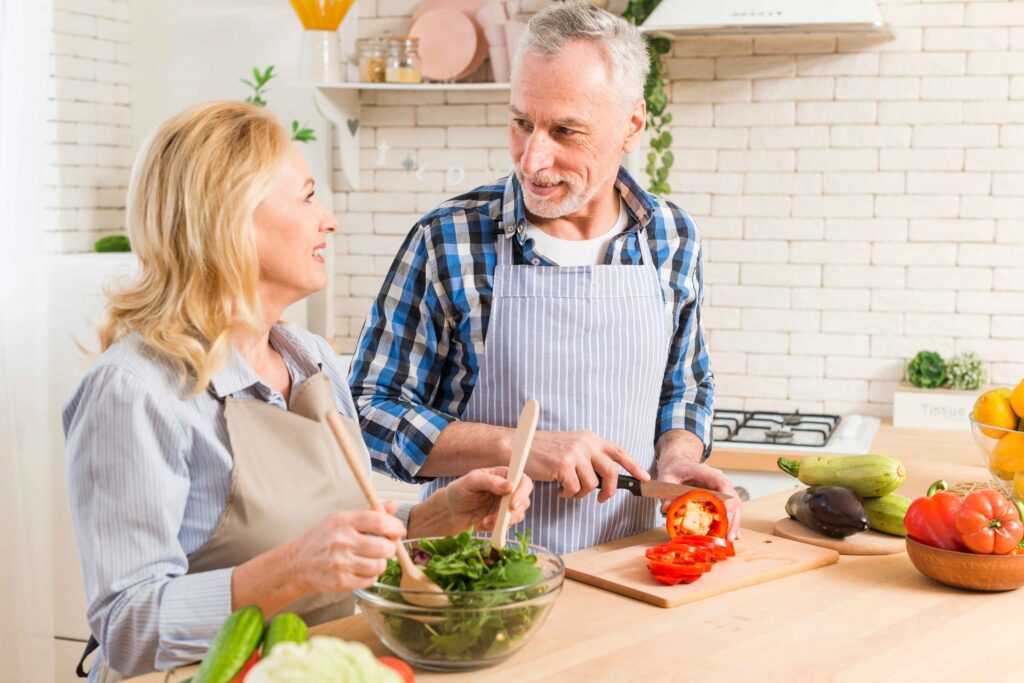Good digestion is the cornerstone of overall health, especially as we age. For many seniors, issues like constipation, bloating, or irregularity can become more common — but the good news is that one simple dietary change can make a big difference: increasing your fiber intake.
Fiber is a plant-based nutrient that your body can’t digest, but it plays a powerful role in keeping your digestive system moving smoothly. Adding more fiber-rich foods to your meals can help ease digestion, support regularity, and even lower the risk of certain diseases.
Let’s take a closer look at how fiber works, what foods are naturally rich in it, and how you can easily add more to your daily routine — all while enjoying tasty, satisfying meals.
What Is Fiber, and Why Is It So Important for Seniors?
Fiber comes from the parts of plants your body can’t break down. It passes through your digestive system relatively intact, helping keep things moving and acting like a natural broom for your gut.
There are two main types:
-
Soluble fiber dissolves in water and helps soften stools. It also helps control blood sugar and cholesterol.
-
Insoluble fiber adds bulk to stool and helps it pass more quickly through the intestines.
Both types are important for seniors because:
-
They help prevent constipation, a common concern with age.
-
They support heart health by lowering cholesterol.
-
They regulate blood sugar, which is especially important for those managing diabetes.
-
They feed healthy gut bacteria, which improves immunity and digestion.
Top Fiber-Rich Foods to Add to Your Diet
You don’t need fancy foods or supplements to get more fiber. Many everyday items are naturally packed with it. Here are some great sources to include in your meals:
1. Fruits
-
Apples (with the skin)
-
Berries (raspberries, blackberries, blueberries)
-
Pears
-
Oranges
-
Prunes
Tip: Fresh, frozen, or canned (in natural juice or water) are all good options.
2. Vegetables
-
Carrots
-
Broccoli
-
Sweet potatoes (with skin)
-
Spinach and leafy greens
-
Green beans
Cooking tip: Steamed or roasted vegetables are softer and easier to digest for seniors with dental or chewing issues.
3. Whole Grains
-
Oatmeal
-
Brown rice
-
Whole wheat bread or pasta
-
Barley
-
Quinoa
Note: Look for “whole grain” on labels — avoid overly processed options that remove fiber.
4. Legumes and Beans
-
Lentils
-
Chickpeas
-
Black beans
-
Kidney beans
-
Split peas
Gentle tip: Rinse canned beans well to reduce sodium and minimize gas.
5. Nuts and Seeds
-
Almonds
-
Walnuts
-
Flaxseeds
-
Chia seeds
-
Sunflower seeds
A small handful goes a long way. These also offer healthy fats and protein.
How Much Fiber Do Seniors Need?
According to nutrition guidelines:
-
Women over 50 should aim for about 21 grams per day
-
Men over 50 should aim for 30 grams per day
However, most people get much less than that. By making a few small changes to your daily meals, you can easily work your way up to a healthier fiber intake.
Easy Ways to Add More Fiber Without Overwhelm
-
Start your day with fiber
Oatmeal with fruit and a sprinkle of nuts is a great, soft, and filling breakfast. -
Choose whole over white
Swap white bread or rice for whole-grain versions. Even one change per day helps. -
Add veggies to every meal
A handful of greens in your eggs or a side of steamed carrots with lunch adds fiber without effort. -
Snack smart
Try air-popped popcorn, a small apple with peanut butter, or a trail mix with dried fruits and nuts. -
Hydrate, hydrate, hydrate
Drinking water is key when increasing fiber. Without it, fiber can actually slow digestion. Aim for 6–8 glasses of water daily. -
Increase fiber gradually
Adding too much fiber all at once can cause gas or bloating. Introduce high-fiber foods slowly over several days and pay attention to how your body responds.
When to Speak with Your Doctor
While fiber is generally very beneficial, seniors with certain digestive conditions (like diverticulitis or IBS) should consult their doctor before drastically increasing fiber. Also, if you’re on any medications, your doctor or dietitian can guide you on the best fiber sources for your situation.
Final Thoughts
Improving digestion doesn’t require big changes — just a few mindful tweaks to your meals. By focusing on whole foods like fruits, vegetables, beans, whole grains, and nuts, you’ll naturally increase your fiber intake and support a more comfortable, regular digestive system.
As always, start slow, drink plenty of water, and enjoy your meals. Eating for good digestion should feel good — not like a chore. So go ahead and savor that apple, that oatmeal, or that vegetable soup. Your body will thank you.
Check out our free Nutrition fruits and nuts tool if you haven’t already.
FREE DOWNLOADS: PDF 1 – Fiber-Rich Food Chart for Seniors
FREE DOWNLOAD: PDF 2 – Fiber-Rich Food Chart for Seniors (formatted differently from #1)





